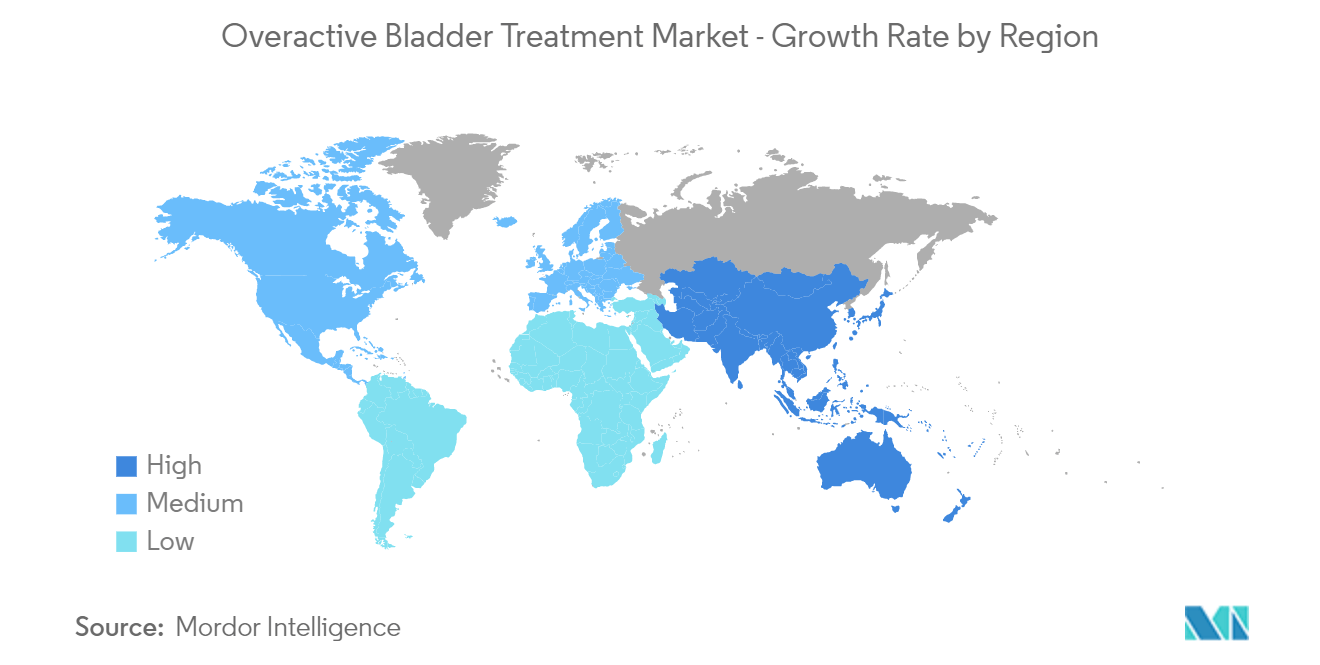Market Trends of Overactive Bladder Treatment Industry
Neurostimulation Segment is Expected to Hold a Significant Share Over the Forecast Period
Neurostimulation is a minimally invasive technique used in OAB treatment, which delivers electrical impulses to the nerves involved in bladder control. The implantable device is placed near the sacral nerves through surgery or a percutaneous approach. Controlled electrical stimulation helps regulate bladder activity, alleviating urgency and frequency and improving control, providing an alternative treatment for patients unresponsive to other therapies.
The major factors driving the segment growth include the high prevalence of the OAB and wide acceptance of neurostimulation treatment amongst patients who are irresponsive to drugs such as Anticholinergics and Mirabegron. According to an article published by the NCBI in May 2023, Sacral neuromodulation (SNM) is a highly adopted procedure for OAB treatment in the United States for patients unresponsive to pharmacologic therapy owing to its high efficacy, safety, and minimally invasive nature. The same source mentioned that the treatment is highly prominent in Canada and Europe for treating urinary incontinence, urinary retention, urgency, frequency, and faecal incontinence. Therefore, compared to more invasive procedures, such as surgery, neurostimulation is considered safer and more appealing, attracting more patients and driving market growth. The strategic initiatives the market players take, such as active participation in the launch of novel OAB therapies, are also expected to propel the market segment's growth. For instance, in March 2022, Valencia Technologies Corporation received United States Food and Drug Administration (FDA) premarket approval (PMA) for its eCoin leadless tibial neurostimulator for the treatment of urinary urge incontinence (UUI), which affects over 60% of patients who suffer from overactive bladder (OAB).
Thus, owing to the high preference for neurostimulation therapy and the rising number of product launches, the market segment is expected to project significant growth over the forecast period.

North America is Expected to Hold a Significant Share in the Market Over the Forecast Period
North America is expected to hold a significant share in the overactive bladder treatment market during the forecast period owing to the rising prevalence of OAB and the rising number of product launches in the region. For instance, according to the article published by the Canadian Urological Association Journal in March 2023, an estimated 18% of Canadians are currently suffering from OAB, with around 24% having difficulty adhering to pharmacotherapy. Therefore, the high number of people suffering from OAB in Canada is projected to drive the demand for various treatment therapies, such as neurostimulation and intravesical instillation, during the forecast period.
Furthermore, the rising number of partnerships and novel drug launches by prominent regional players is also projected to accelerate regional market growth during the forecast period. For instance, in November 2022, Urovant Sciences partnered with Thinx Inc to launch Time To Go, a multi-channel educational campaign to highlight the impact of OAB and introduce options for managing symptoms of OAB amongst Americans. In addition, in July 2022, Dr Reddy's Laboratories Ltd. Launched Fesoterodine Fumarate Extended-Release Tablets, a generic therapeutic equivalent to Toviaz in the United States.
Therefore, with the surging number of people affected by OAB, the rising number of partnerships to increase awareness regarding OAB, and the introduction of novel therapies, the market is expected to offer lucrative growth opportunities in the region during the forecast period.


